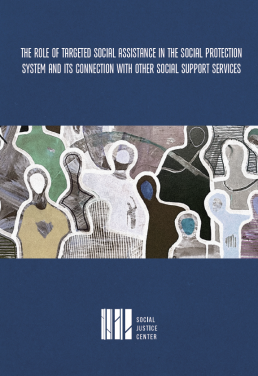საერთო ცხელი ხაზი +995 577 07 05 63


Poverty and inadequate social protection have a significant impact on the realization of any right by a person[1] and ignore his/her dignity.[2] Unfortunately, in many cases, the phenomenon of poverty is examined from the only one angle,[3] while, in order to fight it effectively, the human rights perspective should be taken into account along the economic and social issues. That, in turn, provides important standards concerning the development of social protection mechanisms and their accessibility.
Poverty is considered one of the main and unsolvable challenges in Georgia. According to the 2022 data of the National Statistics Office, the share of the population living below the absolute poverty line is 15.6%, while the relative poverty rate is 19.9%.[4] Unfortunately, since the independence of the country, the government has not taken effective steps, which would be oriented on the needs of the population for preventing and eradicating this problem, which further aggravates the existing situation.
Over the years, the essence of the social assistance system has changed little and covers services at the central and local levels. Among the existing mechanisms at the central level, the targeted social assistance (hereinafter – “TSA”) system is particularly noteworthy, which provides monthly financial allowance to households living in socio-economic vulnerability. The existing system is not limited to this type of payment, as the point system designed for evaluating the socio-economic situation of households is also a prerequisite for inclusion in many other services.
Linking other services to the socio-economic status assessment system may be considered important given the need for additional support of households already identified by the state. However, the mentioned system may be problematic, on the one hand, due to the increase in the dependence of socially vulnerable families on the governmental allowance and, on the other hand, considering the neglect of the population left behind/not having the score below the legislative threshold due to various reasons.
Considering the above-mentioned, the purpose of this document is the research of international and national standards on the role of TSA in the social protection system and its relationship with other services, the identification of the relevant gaps and preparation of relevant recommendations for the transformation of the social protection system and the inclusion of the human rights perspectives.
[1] Regardless of the content and classification of the mentioned right.
[2] OHCHR, OHCHR and the Human Rights Dimension of Poverty, https://bit.ly/3Ix7qX0; Committee on Economic, Social and Cultural Rights, General Comment No. 19: the Right to Social Security (Art. 19), E/C.12/GC/19, 2008, Par. 1.
[3] OHCHR, OHCHR and the Human Rights Dimension of Poverty, https://bit.ly/3Ix7qX0.
[4] National Statistics Office of Georgia, Poverty and Gini Coefficients, https://bit.ly/3knw5Fk.
The website accessibility instruction